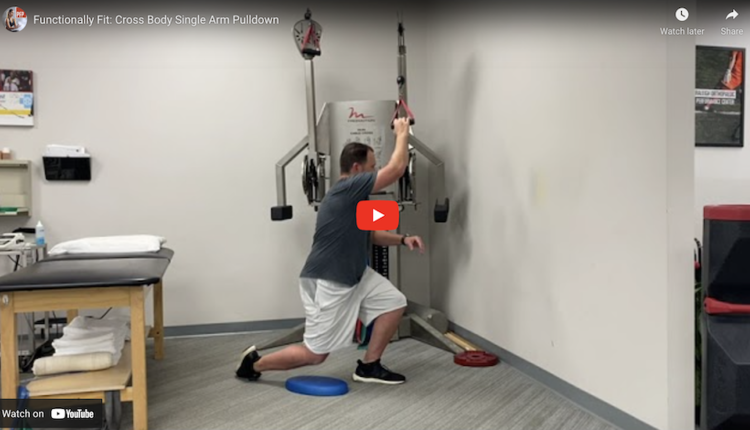
 In the latest edition of Functionally Fit, Brian demonstrates an exercise to reduce rotator cuff dysfunction by targeting the serratus anterior and challenging core stability. In the latest edition of Functionally Fit, Brian demonstrates an exercise to reduce rotator cuff dysfunction by targeting the serratus anterior and challenging core stability.Execution: Begin in a standard plank position on the forearms and toes (feet about shoulder-width apart). Maintaining neutral spine alignment, actively protract the shoulder blades by pressing down into the floor through the forearms. Pause at the top, and then return to the start position. Avoid any lumbar hyperextension at the bottom of the movement.
Application: Research has consistently shown that rotator cuff dysfunction is closely tied to serratus anterior and lower trapezius weakness and/or limited muscular endurance. This exercise targets the serratus anterior, as well as challenging core stability. As a precursor, I typically perform supine serratus dumbbell punches with straight arms to ensure clients understand how to actively protract the scapula. In my experience, overhead athletes and throwers often need core strengthening and scapular stability training. This exercise allows you to effectively integrate both. Below is a sample progression (including a regression in step one for those clients with poor core stability): 1. Modified serratus plank push-up on elbows 2. Traditional serratus plank push-up on floor 3. Serratus plank push-up with feet together (reduces base of support)
Keep in mind the primary goal is to strengthen the serratus anterior and not train the core. Therefore, only advance the exercise if the client is able to maintain proper alignment and achieve the desired protracted position needed to activate the serratus muscle. If for any reason the movement causes shoulder pain or discomfort, consider the supine punches or a standing theraband or cable punch in the interim. Brian Schiff, PT, CSCS, is a licensed physical therapist, respected author and fitness professional. Currently, he serves as the supervisor at the Athletic Performance Center in Raleigh, NC. Brian presents nationally at several professional conferences and seminars on injury prevention, rehab and sport-specific training. For more cutting edge training information, subscribe to his monthly Training & Sports Medicine Update at www.BrianSchiff.com |

















![dual-task]](https://cms-static.wehaacdn.com/fit--pro-com/images/dual-task-.5494.widea.0.jpg)


